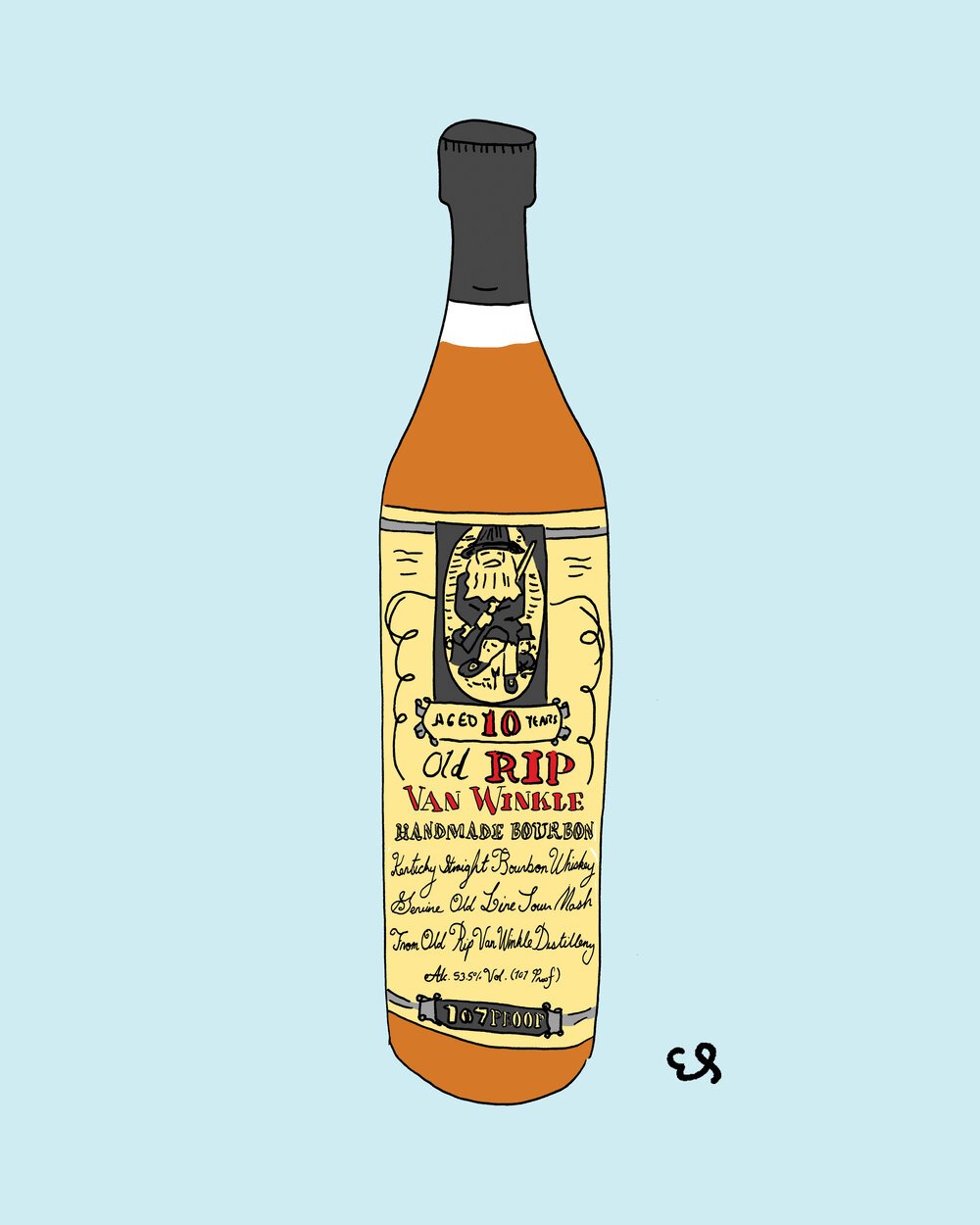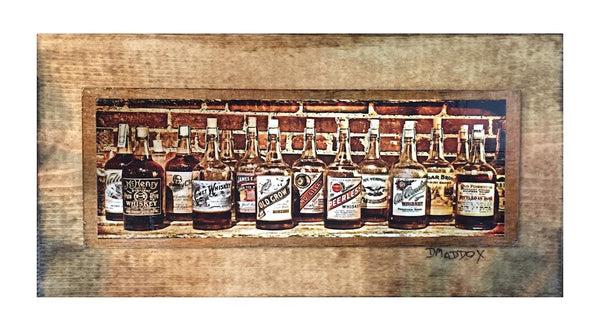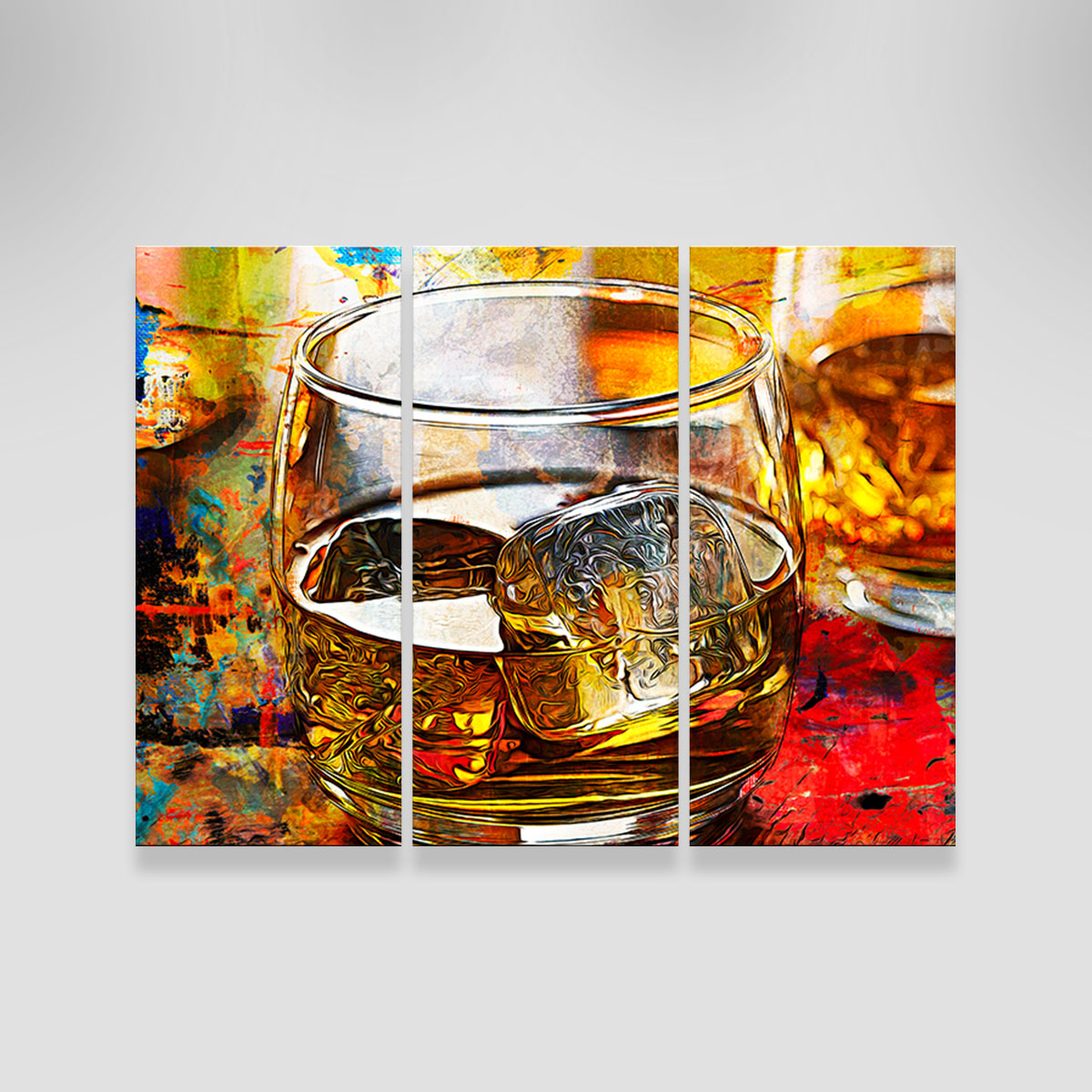The Importance of Whiskey Art in Celebrating Heritage and Craftsmanship in the Beverage Industry
The elaborate partnership in between bourbon art and the party of heritage and craftsmanship within the drink market can not be overstated. Via thoughtfully designed containers and labels, bourbon brands envelop their historical origins and the artisanal abilities that define their manufacturing methods.
The Historic Roots of Whiskey
At the heart of whiskey's attraction lies an abundant tapestry of historical origins that trace back to old worlds. The beginnings of whiskey can be connected to the distillation methods of the Sumerians and Babylonians around 2000 BCE, where early types of fermented grain drinks began to arise. It was in the Middle Ages that the art of distillation advanced considerably, specifically in Ireland and Scotland, leading to the creation of scotch as we recognize it today.
The term "bourbon" itself stems from the Gaelic word "uisce beatha," indicating "water of life." This expression underscores the cultural relevance of bourbon in Celtic societies, where it was commonly related to rituals, events, and common bonding. By the 15th century, purification became a recognized craft within reclusive areas, leading the way for the facility of lawful distilleries.
As profession courses increased, whiskey's popularity expanded, transcending local boundaries and catching the passion of lovers worldwide. Realism Art. This historical journey reflects not only the craftsmanship behind whiskey production but likewise its important function in social and social contexts, noting it as a substantial drink throughout background
Artistic Expression in Branding
Bourbon branding stands as an engaging junction of virtuosity and business, where aesthetic identification plays a critical duty in forming customer understanding. The aesthetics of bourbon tags, product packaging, and advertising and marketing products show not only the brand's tale yet likewise its core values and heritage. Through artistic expression, distilleries convey a story that reverberates with consumers, evoking feelings and stimulating links.
The usage of shade, typography, and imagery in branding offers to separate products in a saturated market. For instance, standard motifs might evoke a feeling of authenticity and workmanship, while contemporary designs can indicate advancement and forward-thinking. This strategic creative instructions improves brand name recognition and commitment, allowing consumers to build a personal partnership with the whiskey they select.
Moreover, creative expression in branding often functions as a celebration of regional heritage. Distilleries regularly incorporate regional icons or historical recommendations right into their designs, producing a feeling of place that invites customers to partake in a wider social experience. Inevitably, the artistry behind scotch branding not just boosts visual charm yet also enriches the general story of the brand, promoting a much deeper appreciation for the craftsmanship and heritage embedded in each container.
Workmanship in Container Layout
The artistry apparent in scotch branding expands past aesthetic identity to encompass the craftsmanship included in container layout. Each container offers as a vessel not simply for the spirit within, but also for the story it outlines its practice, beginning, and top quality. The design process needs meticulous attention to information, as elements such as closure, form, and product contribute considerably to the overall perception of the whiskey.
Workmanship in container style includes selecting premium glass that can enhance the whiskey's shade and clearness, while likewise offering a tactile experience for the customer. The shape of the bottle must be both aesthetically appealing and useful, commonly showing the heritage of the brand. Several distilleries choose special shapes or printed logos that evoke a feeling of authenticity and background.
Additionally, the label layout and typography play a vital duty in communicating the brand name's narrative. Realism Art. read this A well-crafted container not only astounds the consumer's eye yet likewise reinforces the brand name's commitment to high quality and tradition. In this means, the craftsmanship of container design ends up being an important facet of the whiskey experience, combining artistry with an extensive respect for heritage
Social Significance of Scotch Art
Celebrating custom and workmanship, the cultural value of whiskey art goes beyond mere appearances, intertwining with the social and historic narratives of the areas from which it comes from. Each container acts as a canvas, illustrating the unique stories, mythology, and traditions that have formed neighborhood whiskey-making practices. The complex layouts typically mirror the heritage of the distillers, incorporating symbols and themes that reverberate with the society and values of their neighborhoods.

On top of that, bourbon art plays an important duty in communal celebrations and celebrations, working as a tangible web link between people and their shared experiences. By valuing the creativity in bourbon packaging, customers grow a deeper understanding and regard for the craft, inevitably enhancing their satisfaction of the beverage itself.
Modern Trends in Scotch Discussion
In the last few years, the presentation of bourbon has progressed to mirror modern preferences and patterns while still recognizing typical craftsmanship - Realism Art. Distilleries are progressively concentrating on visual elements that improve the total alcohol consumption experience, bridging the space in between heritage and modernity
Innovative bottle styles have actually arised, often integrating lasting products and imaginative tags that tell compelling stories. Lots of brand names currently team up with local artists, infusing their products with special aesthetic expressions that reverberate with customers. In addition, limited-edition you can try here launches are often packaged in collectible containers, adding value and appeal for lovers.

Conclusion
Finally, bourbon art functions as an important avenue for sharing the heritage and craftsmanship fundamental in the drink sector. Through elaborate branding, ingenious container layouts, and culturally significant artistic aspects, scotch brand names properly recognize their traditions and get in touch with consumers. This creative story not just boosts the admiration of whiskey but also reinforces neighborhood identity and pride among producers. Eventually, scotch art plays a necessary duty in preserving and commemorating the abundant social tapestry of whiskey-making.


Workmanship in bottle design involves picking high-grade glass that can boost the scotch's color and clarity, while additionally supplying a tactile experience for the consumer. In this means, the workmanship of bottle design comes to be a crucial aspect of the whiskey experience, combining creativity with a profound regard for heritage.
In final thought, whiskey art offers as a crucial conduit for expressing the heritage and workmanship fundamental in the beverage market.